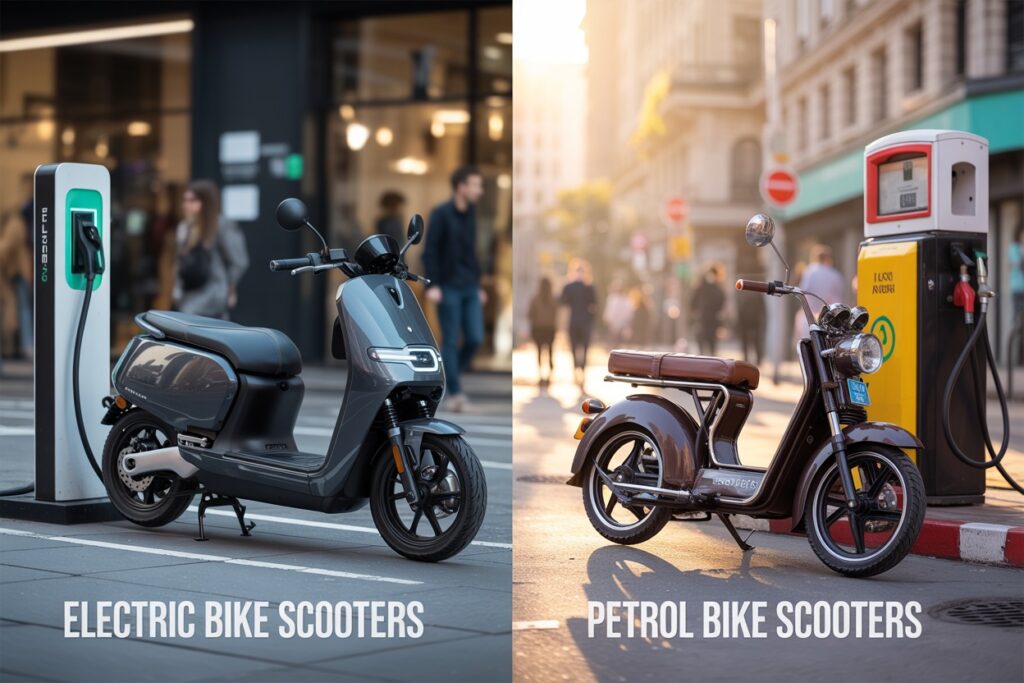
Are Electric Scooters Cheaper Than Petrol Scooters in India
Every time I’m out on my electric scooter, someone inevitably asks me: “Kitna deti hai?” But they’re not asking about mileage—they want to know if I’m actually saving money. It’s the million-rupee question that everyone considering the EV switch wants answered.
The Upfront Shock vs. Long-term Savings
Let’s address the elephant in the room—electric scooters generally cost more upfront. When I was scooter-shopping last year, I noticed most decent electric options started around ₹85,000 and went well above ₹1 lakh. Compare that to popular petrol models like the Activa or Jupiter that start at ₹75,000-80,000.
For example, the Vida V2 Plus is priced at around ₹85,300 (ex-showroom with subsidies). Similar offerings from competitors like Ather, Ola, and TVS also hover around this range or higher. It’s a significant initial investment, no doubt.
But here’s where the calculation gets interesting—the running costs.
The Real Math: Day-to-Day Expenses
After six months of ownership, I’ve done the math meticulously:
Petrol scooter:
-
Fuel: At ₹100/litre and 45km/litre efficiency, I’d spend roughly ₹2.22 per kilometer.
-
Servicing: Quarterly service at ₹800-1,500 each time, including engine oil changes, filter replacements, etc.
Electric scooter:
-
Electricity: At ₹8/unit and 3 units for a full charge, giving 100 km range (real-world), I spend about ₹0.24 per kilometer.
-
Servicing: Minimal with fewer moving parts—mostly software updates and brake checks.
That’s nearly a 90% reduction in running costs! For my 30 km daily commute, I’m saving approximately ₹1,800 monthly or ₹21,600 annually just on fuel.
Hidden Savings (and Costs)
What many don’t consider are the maintenance differences. My neighbour’s petrol scooter regularly needs oil changes, carburetor cleaning, and various replacements. Meanwhile, my electric scooter’s maintenance is significantly simpler—no oil changes, fewer mechanical parts to wear out, and regenerative braking means less wear on the brake pads.
However, let’s be honest—there’s the elephant in the room: battery replacement. Quality lithium-ion batteries in scooters like the VIDA have warranties ranging from 3 to 5 years, but eventually will need replacement at a cost of ₹20,000-40,000, depending on capacity. This is a future expense that petrol scooter owners don’t face.
Some manufacturers like VIDA offer removable batteries, making charging more convenient and potentially extending battery life because you can charge them in controlled environments.
The Break-Even Point
Based on my calculations, the break-even point comes at around 30,000-40,000 km for most models. For the average urban commuter doing 10,000 km annually, that’s 3-4 years before the electric scooter becomes the more economical choice.
But there are other factors too:
-
Government subsidies can reduce the initial price gap
-
Petrol prices continue to rise while electricity rates are more stable
-
Some states offer road tax exemptions for EVs
-
Insurance premiums are often lower for electric vehicles
Beyond Economics
While this is about cost, I can’t ignore the non-monetary benefits. No more petrol pump queues, the convenience of home charging (particularly with removable batteries), and the satisfaction of zero tailpipe emissions.
The electric riding experience—instant torque, silent operation, no vibrations—feels like a premium upgrade that’s hard to put a price tag on.
Conclusion: Are Electric Scooters Cheaper Than Petrol Ones?
So, are electric scooters cheaper than petrol ones? If you’re planning to keep your scooter for at least 3-4 years and ride regularly, the answer increasingly leans toward yes. The higher upfront cost is gradually offset by significantly lower running expenses.
The longer you own it, the more the financial equation tips in favour of electric. Just like smartphones a decade ago, we’re at that tipping point where what seems expensive today will likely become the obvious economic choice tomorrow.







